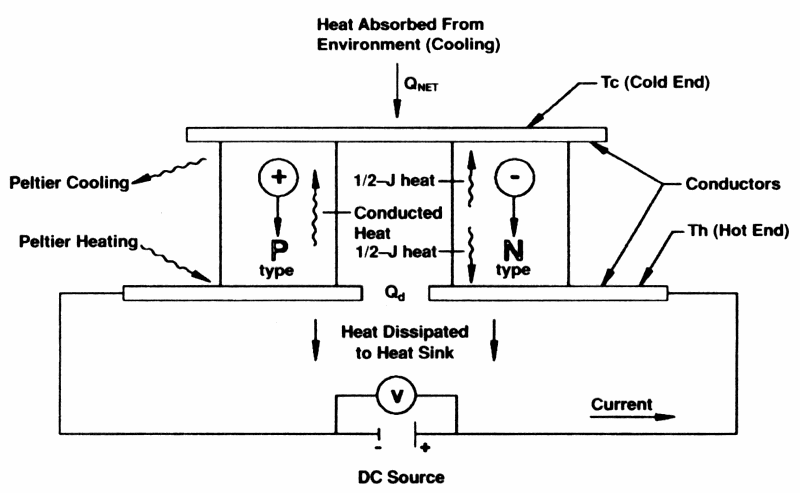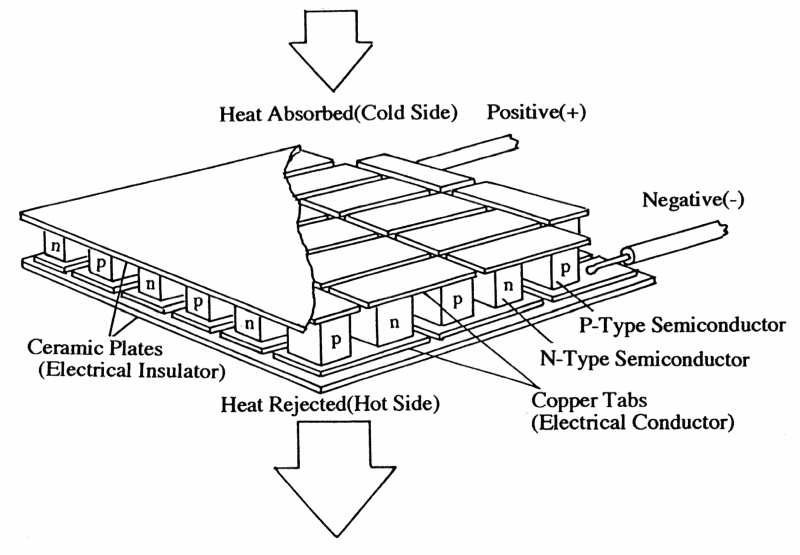How Peltiers work
Luckily I was a student at Cardiff University, which is world famous for research into thermoelectrics. Unluckily the lecturer who does all this research is about as unhelpful as they get, so I had to find out all this information the hard way:
In 1823, Seebeck discovered that a closed loop formed from two dissimilar conductors would produce an electric current when one of the junctions was heated. This is called the Seebeck effect.
The opposite of this, the Peltier effect, was discovered in 1835. Peltier noticed that a temperature change occured when current was passed through a junction of two dissimilar conductors. This forms the basis of modern Peltier heat pumps.
Peltiers are constructed from two dissimilar materials, which are usually semiconductors, and in almost all commercially available modules it is bismuth telluride doped to form n and p-type material. Electrons in the two materials have different potential enegries, so to move from one material to the other they must either absorb energy or release it, depending on which way they are travelling. This results in heat being absorbed on one side, and released on the other, as shown in the diagram below.

The diagram also shows that half of the Joulian heat produced in the device (current x voltage) travels to the hot side, and half to the cold side.
Conveniently, reversing the direction of the current reverses the direction of heat flow, which is very useful for temperature control applications (not much good for computer cooling though).
These elements require a very large current but only a small voltage to make them work, so commercial modules usually use many of these elements connected electrically in series and thermally in parallel to increase the supply voltage to levels more easily produced.

This page is still under construction (and apparently it will never be finished now).